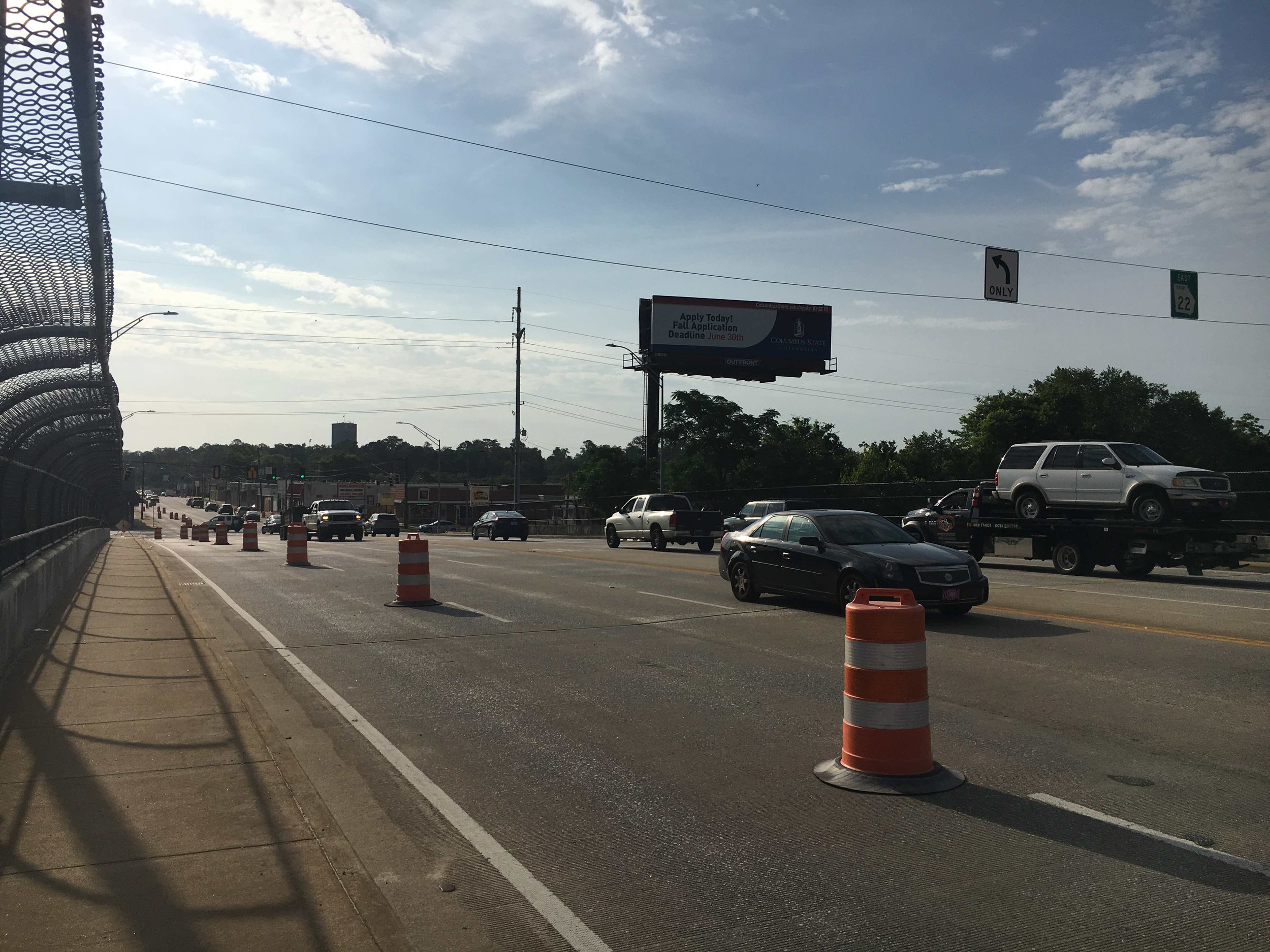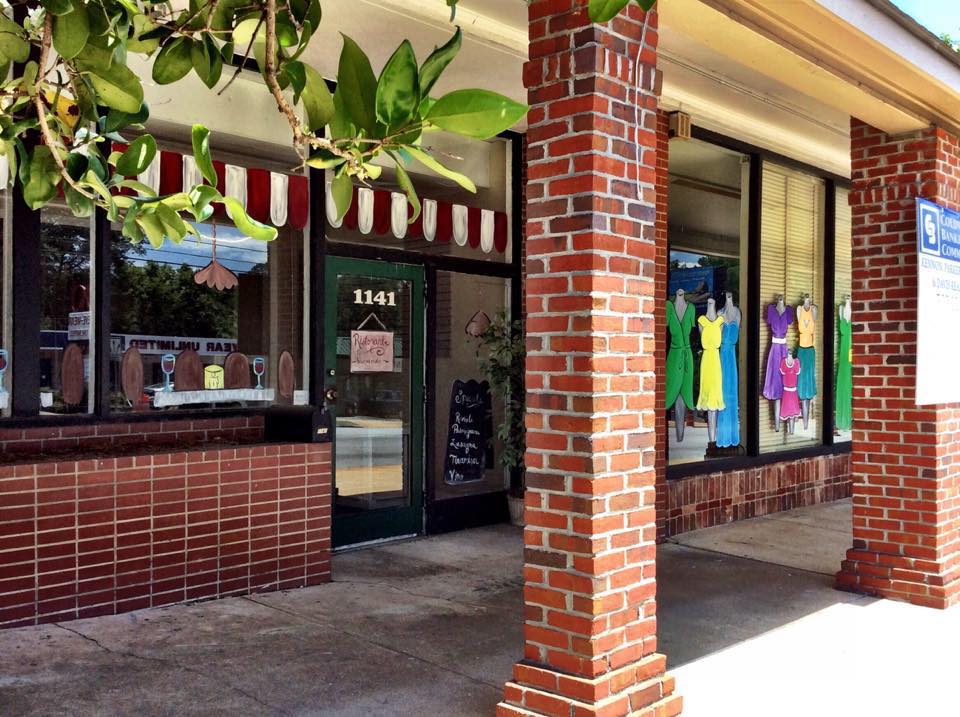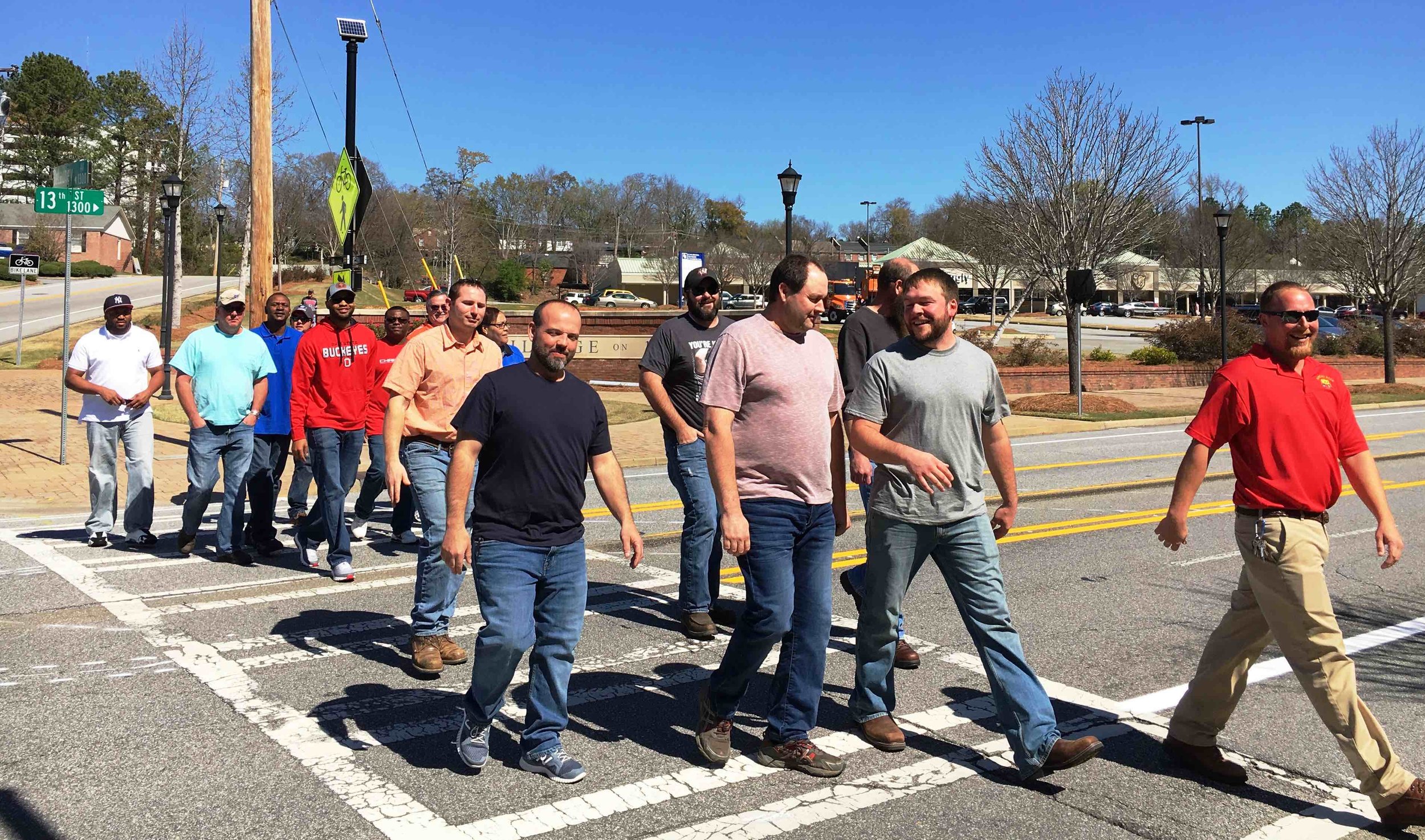Slower Cars = Safer, More Economically Productive Streets
This week, we are asking those who read, believe in and benefit from Strong Towns to support us by becoming members of the Strong Towns movement. Our small nonprofit is supported primarily through donations from members like you and we need your help to keep doing this important work.
Will Burgin is a Strong Towns member and president of Jackson-Burgin Inc. a commercial leasing and development company in Columbus, GA. Today he's sharing the story of how Strong Towns inspired him to work with a team of strong citizens to make streets safer in his community while improving economic productivity at the same time. Head to our Success Stories page to see more of the Strong Towns message in action.
13th Street in Columbus, GA, before the redesign
For over a generation my family has owned a small retail commerial center along 13th Street in Columbus, Georgia. Having owned something that long, we have photos of the buildings over the years as tenants came and went. Subtle changes were made to the buildings and the signage adjusted, but the neighborhood feel remained.
Sometime in the late 1970’s, the roadway was expanded from two lanes with on-street parking to four. At the time, an increase in traffic counts was thought to add value. Further up the street, the roadway was ‘improved’ further; it became five lanes and was being fed from downtown with a new seven lane bridge over the working rail yard.
Yet, as time passed, rents went backwards, occupancy was shorter and parking and access to the buildings became a greater concern for tenants. We made significant improvements to the buildings – so much so that we purchased the shopping center on the other side of the road to have the space available to do similar improvements.
Fast forward ten years and the work by Strong Towns has begun to change the way we view our roadways, their costs, and the impact on adjacent properties. The need to #SlowtheCars has not changed, but the way a community communicates that need has been radically updated.
In Columbus, the need to redesign 13th Street came to the forefront when an alignment of efforts between a number of community groups occurred. We could quickly move the articulation of this need from political favor to necessary for equitable transportation, community building, and improvement in the productivity of a space. Beginning in 2014, community leaders attended the Doable Cities Conference hosted by the Knight Foundation and 8-80 Cities. The Knight Foundation along with Gehl Studio continued to be involved in our community, funding the creation of a minimum grid plan to better connect our core communities and helping us assess our public space.




Knowing that the Strong Towns message was something that could change Columbus for the better, in 2016 both Charles Marohn of Strong Towns and Joe Minicozzi of Urban3 spoke to city and community leaders in various forums.
The culmination of the minimum grid grant included funding for a demonstration project. Midtown, Inc. and the city of Columbus both were excited to help convert the section of 13th Street in front of my shopping center back to two travel lanes and a center turn lane. With the balance of the space, bike lanes were added for each direction of travel. Because this was a local street, was funded through a grant, and the staff believed it was in the best interest of the community, the project was approved and executed with little fanfare. In fact, we heard stories of some who drove on the street for a week before they noticed the change.
However, the effect of the change was immediate. The motorists on the roadway consistently ran at or below the speed limit. Those driving through the area felt more safe in their cars and all the businesses commented that their customers felt more comfortable coming and going from the center. The biggest change, though, was that the street became crossable. Tenants, their staff and customers began using the ample parking across the street and found that consistently crossing the street was easy. It has been a resounding success.
The team that led the 13th street redesign: Anne King (Midtown, Inc.), Will Burgin (Jackson Burgin, Inc)., Tyler Peek – Georgia Department of Transportation, and Betsy Covington (Community Foundation of the Chattahoochee Valley, Inc.). Not pictured: Donna Newman (City of Columbus, Engineering Department Director). Photo by Ritchie White.
Then an amazing opportunity presented itself: the Georgia Department of Transportation notified the city and Midtown that Spur-22 was due to be repaved which gave us the historic opportunity to make a similar change to the road section on the state rout portion of 13th street. Having worked with the city on other road test projects, we quickly scheduled a demonstration project with both roadway changes as well as pop-up retail events.
The two week test concluded several weeks ago. The data showed us that the shift only moderately affected travel times during peak usages times. It also resulted in many who admitted they never really slowed enough to notice the vacant buildings along that corridor. However, the barrels, traffic change and public nature of the demonstration project has laid bare the need for counting need for place making education and the message of Strong Towns.
As we solicit Columbus Council support for the work proposed by GDOT, time and again I reference the studies, logic and graphics created by Strong Towns, of which I’m a proud member. It will be some time before we know the outcome of the test project, but being allowed to test the concept and engage with others in the need for this creative rethinking of our infrastructure will pay dividends no matter what.
Do you value Strong Towns' mission of building safe, economically productive towns that support entrepreneurs and small business owners? Help us spread this message and encourage street redesigns like the one in Columbus by becoming a member of Strong Towns today.
(All photos courtesy of Anne King unless otherwise noted)


